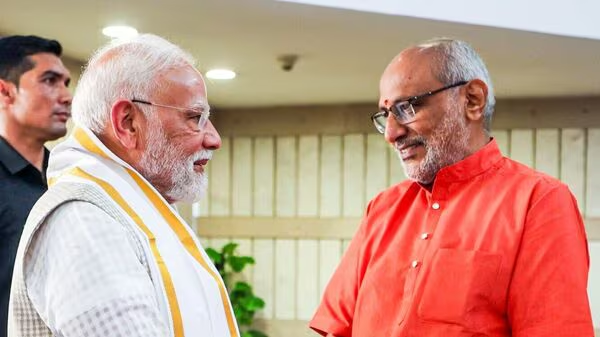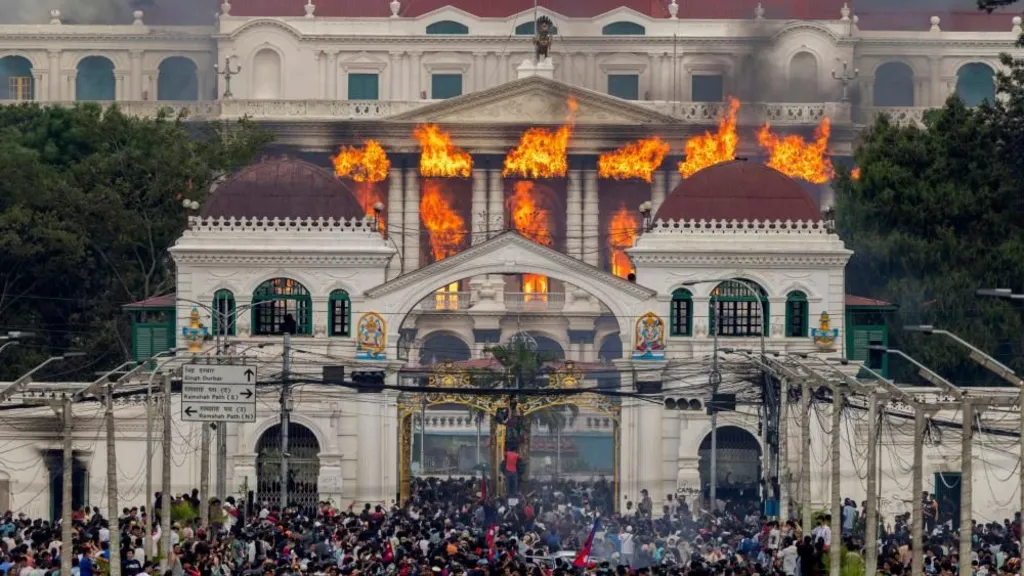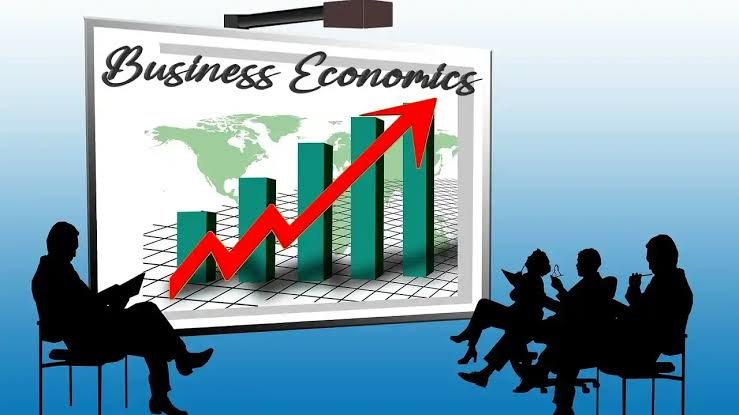India's Economic Trajectory in 2025: Resilience Amidst Global Headwinds

Northeast Windows TV
As of May 30, 2025, India continues to solidify its position as one of the world's fastest-growing major economies, demonstrating remarkable resilience amidst a complex global economic landscape. The latest economic reports highlight robust growth, moderated inflation, and a strategic focus on key sectors, even as challenges persist.
Robust Growth Continues, Driven by Domestic Demand
India's Gross Domestic Product (GDP) growth for the fiscal year 2024-25 (ending March 31, 2025) has been estimated at a strong 6.5%, largely in line with earlier government and Reserve Bank of India (RBI) projections. The fourth quarter (January-March 2025) saw an accelerated growth of 7.4%, surpassing some expectations. This impressive performance is primarily attributed to robust domestic demand, particularly a significant recovery in Gross Fixed Capital Formation and a sustained increase in private consumption.
Sector-wise, the services sector has been a significant growth engine, expanding by 7.3% in Q4 FY225. The industrial sector also showed a notable recovery, with construction recording an impressive 10.8% growth. The agriculture sector maintained its positive trajectory, contributing to the overall economic momentum. The government's emphasis on infrastructure development, coupled with a booming digital economy, has provided crucial tailwinds.
Inflationary Landscape: A Moderating Trend
Inflation has shown a moderating trend, providing some breathing room for policymakers. The headline Consumer Price Index (CPI) inflation for April 2025 registered 3.16%, a decline from March 2025. This moderation is particularly evident in food inflation, which saw a significant decline in both rural and urban sectors. While fuel and light inflation showed a slight increase, the overall trend suggests that the RBI's efforts to manage price stability are yielding results. This easing inflation has created policy space for the RBI to potentially consider further accommodative measures.
Monetary and Fiscal Policy in Action
The Reserve Bank of India (RBI) has been proactive in its monetary policy. In its April 2025 meeting, the Monetary Policy Committee (MPC) unanimously decided to reduce the policy repo rate by 25 basis points to 6%, shifting its stance to "accommodative." This move, driven by easing inflation and a gradual recovery in economic activity, aims to further support economic growth. The RBI has projected real GDP growth at 6.5% for the ongoing fiscal year (FY2025-26), maintaining consistency with the previous year's estimate.
On the fiscal front, the government has set a fiscal deficit target of 4.8% of GDP for FY2024-25, with an aim to further reduce it to 4.4% in the current fiscal year (FY2025-26). The Union Budget 2025-26, presented earlier this year, emphasized "Sabka Vikas" (development for all), with a focus on balanced growth across regions and strategic investments.
Foreign Trade and Key Sectors
India's foreign trade performance in early 2025 has been mixed but generally positive. Total exports (merchandise and services combined) for January 2025 reached USD 74.97 billion, marking a 9.72% growth year-on-year. While imports also increased, leading to a trade deficit, certain sectors have demonstrated strong export growth. Electronic goods exports surged by nearly 79%, followed by drugs and pharmaceuticals, engineering goods, and rice.
Several sectors are driving India's economic growth story. Information Technology (IT) and software services continue to be global leaders, fueled by demand for cloud computing, AI, and cybersecurity. The renewable energy sector is expanding rapidly, aligning with India's net-zero ambitions. Pharmaceuticals and healthcare, e-commerce and digital retail, construction, and the automotive industry (with a shift towards EVs) are also critical contributors.
Challenges and Opportunities Ahead
Despite the positive outlook, India faces challenges. Global trade uncertainties, geopolitical tensions, and potential for irregular rainfall could pose headwinds. Structural challenges, such as the need for continued reforms in land acquisition and labor laws, and the imperative to create sufficient job opportunities for a large youth population, remain critical.
However, significant opportunities also lie ahead. India's large domestic market, a growing middle class, and strong demographic dividends provide a solid foundation for consumption-led growth. The ongoing digital transformation, government initiatives like the Production Linked Incentive (PLI) schemes, and increasing investment in infrastructure are expected to further boost manufacturing and overall economic activity. As India continues its journey towards becoming a developed nation, strategic policy decisions and sustained reforms will be key to unlocking its full economic potential.
As of May 30, 2025, India continues to solidify its position as one of the world's fastest-growing major economies, demonstrating remarkable resilience amidst a complex global economic landscape. The latest economic reports highlight robust growth, moderated inflation, and a strategic focus on key sectors, even as challenges persist.
Robust Growth Continues, Driven by Domestic Demand
India's Gross Domestic Product (GDP) growth for the fiscal year 2024-25 (ending March 31, 2025) has been estimated at a strong 6.5%, largely in line with earlier government and Reserve Bank of India (RBI) projections. The fourth quarter (January-March 2025) saw an accelerated growth of 7.4%, surpassing some expectations. This impressive performance is primarily attributed to robust domestic demand, particularly a significant recovery in Gross Fixed Capital Formation and a sustained increase in private consumption.
Sector-wise, the services sector has been a significant growth engine, expanding by 7.3% in Q4 FY225. The industrial sector also showed a notable recovery, with construction recording an impressive 10.8% growth. The agriculture sector maintained its positive trajectory, contributing to the overall economic momentum. The government's emphasis on infrastructure development, coupled with a booming digital economy, has provided crucial tailwinds.
Inflationary Landscape: A Moderating Trend
Inflation has shown a moderating trend, providing some breathing room for policymakers. The headline Consumer Price Index (CPI) inflation for April 2025 registered 3.16%, a decline from March 2025. This moderation is particularly evident in food inflation, which saw a significant decline in both rural and urban sectors. While fuel and light inflation showed a slight increase, the overall trend suggests that the RBI's efforts to manage price stability are yielding results. This easing inflation has created policy space for the RBI to potentially consider further accommodative measures.
Monetary and Fiscal Policy in Action
The Reserve Bank of India (RBI) has been proactive in its monetary policy. In its April 2025 meeting, the Monetary Policy Committee (MPC) unanimously decided to reduce the policy repo rate by 25 basis points to 6%, shifting its stance to "accommodative." This move, driven by easing inflation and a gradual recovery in economic activity, aims to further support economic growth. The RBI has projected real GDP growth at 6.5% for the ongoing fiscal year (FY2025-26), maintaining consistency with the previous year's estimate.
On the fiscal front, the government has set a fiscal deficit target of 4.8% of GDP for FY2024-25, with an aim to further reduce it to 4.4% in the current fiscal year (FY2025-26). The Union Budget 2025-26, presented earlier this year, emphasized "Sabka Vikas" (development for all), with a focus on balanced growth across regions and strategic investments.
Foreign Trade and Key Sectors
India's foreign trade performance in early 2025 has been mixed but generally positive. Total exports (merchandise and services combined) for January 2025 reached USD 74.97 billion, marking a 9.72% growth year-on-year. While imports also increased, leading to a trade deficit, certain sectors have demonstrated strong export growth. Electronic goods exports surged by nearly 79%, followed by drugs and pharmaceuticals, engineering goods, and rice.
Several sectors are driving India's economic growth story. Information Technology (IT) and software services continue to be global leaders, fueled by demand for cloud computing, AI, and cybersecurity. The renewable energy sector is expanding rapidly, aligning with India's net-zero ambitions. Pharmaceuticals and healthcare, e-commerce and digital retail, construction, and the automotive industry (with a shift towards EVs) are also critical contributors.
Challenges and Opportunities Ahead
Despite the positive outlook, India faces challenges. Global trade uncertainties, geopolitical tensions, and potential for irregular rainfall could pose headwinds. Structural challenges, such as the need for continued reforms in land acquisition and labor laws, and the imperative to create sufficient job opportunities for a large youth population, remain critical.
However, significant opportunities also lie ahead. India's large domestic market, a growing middle class, and strong demographic dividends provide a solid foundation for consumption-led growth. The ongoing digital transformation, government initiatives like the Production Linked Incentive (PLI) schemes, and increasing investment in infrastructure are expected to further boost manufacturing and overall economic activity. As India continues its journey towards becoming a developed nation, strategic policy decisions and sustained reforms will be key to unlocking its full economic potential.







